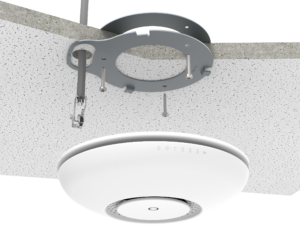After singing the praises of the Decimator MD-HX to the hundredth person who would listen, I’ve decided to make a list of iconic devices from my life, projects, and travels. Obviously I’ll have some biases based on the sorts of things I work on, but I’ll try to keep the variety factor up. I’ll also update the list to add more items as I think of them.
The approximate rubric for a Device of All Time: It doesn’t have to be the best device, but it should be reliable, versatile, and optionally iconic for another reason.
Without further ado, let’s start with the reason this list exists:
Decimator Design MD-HX

This device will take SDI or HDMI input and output it over SDI or HDMI. It can even do both at once, with two different video signals. It’s tolerant of the most marginal, screwed up, and uncommonly-used signals and formats. And there is a scaler chip internally that will handle converting the bizarre stuff people’s laptops and game consoles send, into the same format the rest of your Video World is using. The voltage input range is wide, so you can run it on a beltpack battery or whatever random power brick you have in your bag, it’s solid metal so you could use it as a melee weapon in a pinch, and on top of all that… just look at it. It looks awesome. I love this product.

MikroTik cAP ac

Nominally a basic wireless access point, this device secretly has the same CPU/switch/router SoC as the hAP ac², which would seem to hint that it’s capable of routing at ~gigabit line rate, just like that device. And, during testing, we can see that this is indeed true. Arguably it’s superior to that device in a few ways, namely that its two 1000BASE-T ports are incapable of saturating the link between the switch chip and the CPU, and those ports both support PoE – one input and one output. Somewhat unusually for a MikroTik and also a departure from its hAP sibling, the input voltage is wide, supporting anything from that 12V Decimator power supply you have in your bag, all the way to full-voltage IEEE PoE with standard-compliant negotiation. Plus… that circle on top is a button, and you can make it run a RouterOS script. Clicky! (Oh, and if you hate RouterOS, you can run OpenWRT, too.)
Cisco Catalyst 3560

Ahh, the 3560. In many ways, this is the first Catalyst 3000 that a present-day network engineer would recognize as “modern.” Compared to the 3550, this unit brought us into the era of SFP slots, IPv6, compact (sub-rack-width) models, IEEE-standard PoE, and models with 48 ports of PoE. Introduced in 2004, the last model of this series wasn’t out of support until 2021! Sure, the standard 3560’s user-facing ports were only Fast Ethernet, and most models weren’t dual power (except for that absurd RPS connector no one used) – but who cares? This unit took many organizations through the 2000s and well into the 2010s. And its relatively simple design made for a lower average power draw – meaning it’s still a viable option for non-critical applications such as out-of-band management to this day.
Netgear GS105 5-Port Gigabit Ethernet Unmanaged Switch

Like the EN104 (for 10BASE-T/10BASE-2) and FS105 (for 100BASE-TX) before it, this five-port Gigabit Ethernet switch is from Netgear’s legendary purple era. These compact switches are widely known for being “bulletproof,” surviving for years after being forgotten at the back of a desk, above a drop ceiling tile, or even on the floor of some factory. And actually, there’s a little more happening in this switch than you’d expect – there’s official support for jumbo frames up to 9720 bytes. VLAN tags are ignored, but pass through just fine due to the large supported frame size (and due to the clever way 802.1Q is written). With this feature and the space to learn 4,000 MACs, this unit is more than adequate for your homelab or small/medium business.

